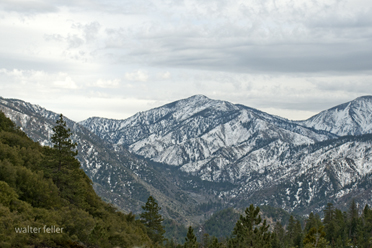/geomorphic-provinces/transverse-ranges.html
The Transverse Ranges are a group of mountain ranges in Southern California, USA. They run east-west and are characterized by their unique orientation, perpendicular to the typical north-south alignment of most other mountain ranges in North America. The Transverse Ranges play a significant role in the geography and climate of Southern California.


The main Transverse Ranges include:
- San Gabriel Mountains: Located northeast of Los Angeles, the San Gabriel Mountains are a prominent part of the Transverse Ranges. They contain several peaks over 10,000 feet, including Mount San Antonio (Mt. Baldy), the highest peak in the range.
- San Bernardino Mountains: To the east of the San Gabriel Mountains, the San Bernardino Mountains are another subrange within the Transverse Ranges. They include prominent peaks such as San Gorgonio Mountain, the highest peak in Southern California.
Additional Transverse Ranges (not in project)
- Santa Ynez Mountains: Situated to the northwest of Los Angeles, the Santa Ynez Mountains are part of the Transverse Ranges and run parallel to the coast. They contribute to the scenic backdrop of the Santa Barbara area.
- Santa Susana Mountains: Located northwest of Los Angeles, the Santa Susana Mountains are a smaller subrange within the Transverse Ranges.
- Topatopa Mountains: Situated north of Ventura, the Topatopa Mountains are part of the Transverse Ranges and are known for their distinctive east-west orientation.
Rain Shadow Desert
The Transverse Ranges have a significant impact on the climate of Southern California. They act as a barrier to moist air coming from the Pacific Ocean, causing a rain shadow effect. This results in a drier climate on the leeward (eastern) side of the ranges, contributing to the arid conditions of the inland areas.